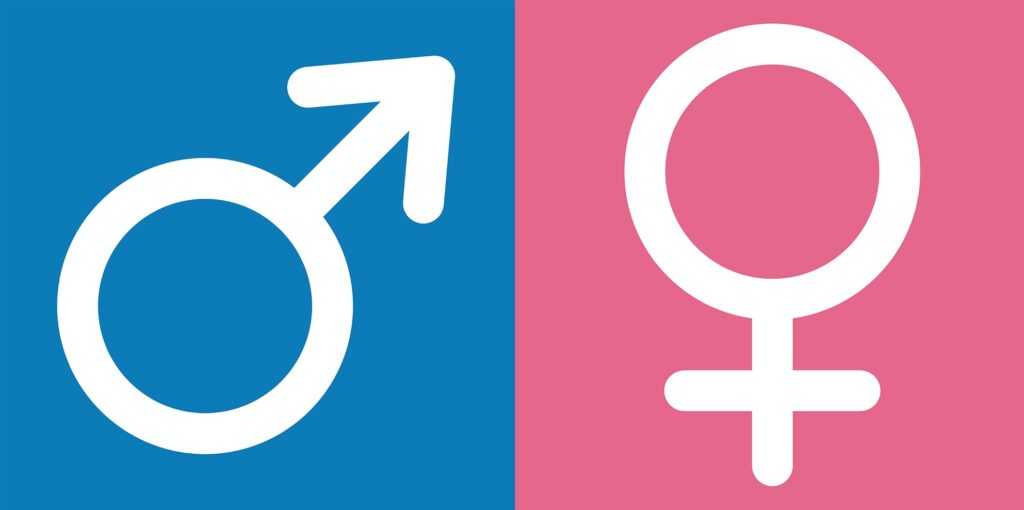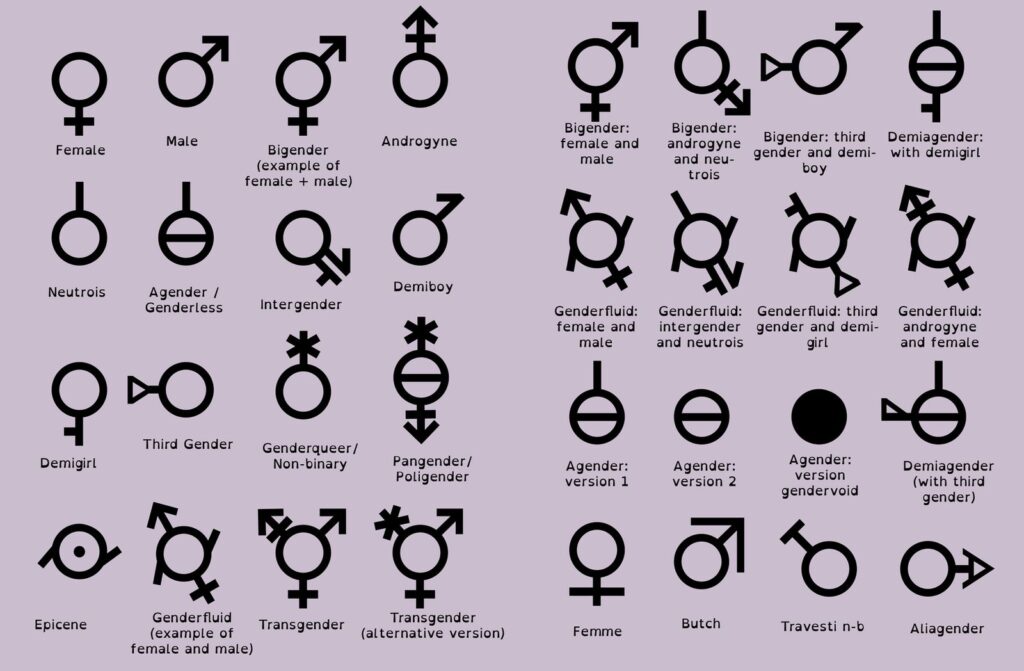Sex and Gender

Sex
Sex refers to your body—your genetics, hormones, and physical attributes such as your sexual and reproductive anatomy (e.g., breasts, penis, testes, uterus). When you’re born, a doctor assigns you a sex that goes on your birth certificate based on your reproductive organs. If you’re born with a penis, you are assigned male, and if you’re born with a vagina, you are assigned female.
If you’re born with body parts that don’t fit the typical definitions of male or female categories, you are described as being intersex. To learn more about intersex, visit this page from the Intersex Society of North America.
Gender
Gender refers to the socially constructed characteristics of men and women, such as norms, gender roles, relationships, even the way you look. It is a social, cultural, and personal identification. Gender identity is the gender you identify with, and gender expression is the way in which you express your gender to others by dressing, acting, and speaking in different ways. There are approximately 52 genders that you may identify with, a lot of which are shown in the picture below. Here are a few that you might have heard before:
- Cisgender. When your gender identity matches your sex assigned at birth.
- Examples:
- If you were assigned as female at birth and identify as female, you are a cisgender woman.
- If you were assigned as male at birth and identify as male, you are a cisgender man.
- Examples:
- Non-binary. This is an umbrella term that encompasses people who do not conform to the social constructs of male and/or female.
- Transgender. When your gender identity does not match your assigned sex.
- Androgynous. Identifying and/or presenting as between masculinity and femininity or having both feminine and masculine traits.
- Questioning. This refers to when you aren’t completely sure of your gender identity or sexual orientation, which is completely okay and normal! You don’t have to be completely sure about your gender or sexuality, and you don’t owe it to anyone to “decide” on what you identify as.
These are just some of the many gender identities that exist and is by no means a comprehensive list. It is important to respect one’s identity. In addition to this page, check out the Sexual Orientation and LGBTQ+ and Gender Pronouns pages for information about and ways you can respect others’ identities.
For more information on sex and gender, visit these pages from the LGBT Foundation and The Trevor Project.

Content reviewed by Mx. Patricio Battani, MPH (Director of Health Equity, Waikīkī Health)
Last Updated: September 4, 2020 by Phyllis Raquinio
Sources
- Male and Female Symbols Photo: Anderson, K. (2019, June 28). Gender Identity. Retrieved July 16, 2020, from https://pointofview.net/viewpoints/gender-identity-2/
- Gender Symbols Photo: Cari-Rez-Lobo. (2014, October 2). Gender Symbols. Retrieved July 16, 2020, from https://www.deviantart.com/cari-rez-lobo/art/Gender-Symbols-486052086